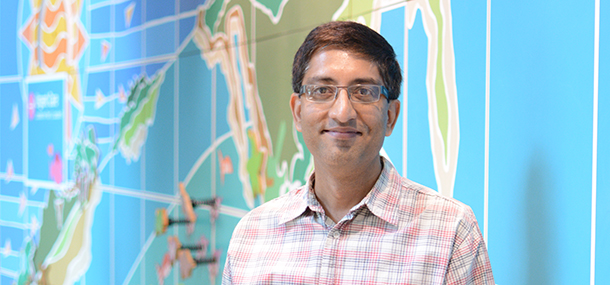

Magnetic Resonance Imaging (MRI) is a non-invasive, non-radiation medical test that helps physicians diagnose and treat complex medical conditions. MRI uses a combination of powerful magnetic fields, radio frequency pulses and reconstruction software to produce detailed internal body pictures. As you may expect, the MRI machines available in the market are typically made for full-size, whole-body adult imaging. At Cincinnati Children’s, we are specially designed, equipped and staffed to obtain high-quality MRI examinations of children of any size, age and medical condition, including tiny newborns, small infants, toddlers, young children and maturing adolescents. We also offer fetal MRIs to care for unborn children. As a MRI physicist, I help with day-to-day image quality issues and perform tests recommended by American College of Radiology (ACR) to validate that our scanners meet and exceed the standards set for performing these scans.
The technology of MRI involves working with stronger magnets, faster imaging methods and sophisticated scanning protocols to improve image quality and enhance pediatric MRI experiences. These developments with hardware and software enhancements drive a wide variety of clinical applications that continue to expand the diagnostic capabilities of this modality.
Keeping up with this technology is a constant challenge for the MR technologists that utilize the MRI to image and for the radiologists and physicians that interpret the images to diagnose disease. In my role as a clinical MRI physicist, I help apply my expertise of qualitative and quantitative MR imaging to suit your child’s needs. I provide assistance in design, application and interpretation of new imaging techniques, protocol implementation, pulse sequence compatibility, and in the training of MR techs in qualitative imaging.
The science, technology and clinical application of MRI continue to undergo rapid development. At Cincinnati Children’s we are also committed to developing new methods or improve existing techniques. In my role, I provide assistance in qualitative MR research project designs, and the interpretation and analysis of imaging data. These research projects are of direct relevance to the clinical practice of pediatric radiology. We are involved in projects that help develop imaging-based validating biomarkers that can assess both regional pathophysiology and treatment efficacy that will ultimately be translated to the clinic.
All and all, I am here to make sure we can find exactly what your child’s doctor is searching for and to display it clearly enough for treatment planning purposes in the future. Ultimately, as an MRI physicist here at Cincinnati Children’s, my goal is to make the pictures of your child’s inside just as beautiful as their outside.
Contributed by Suraj Serai, PhD and edited by Tony Dandino (RT-MR).